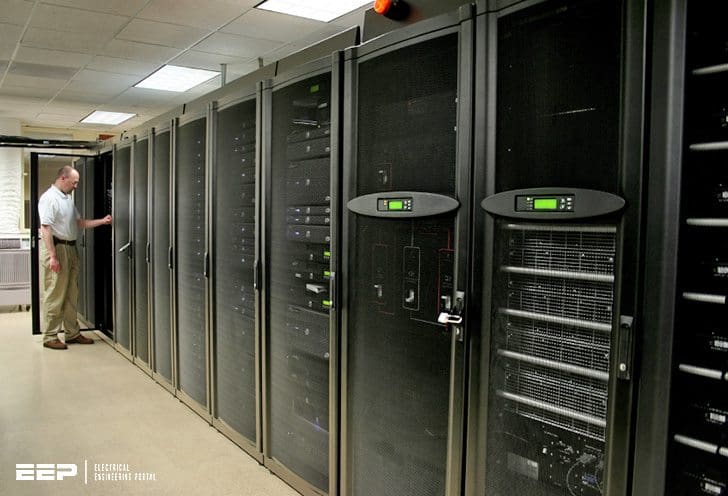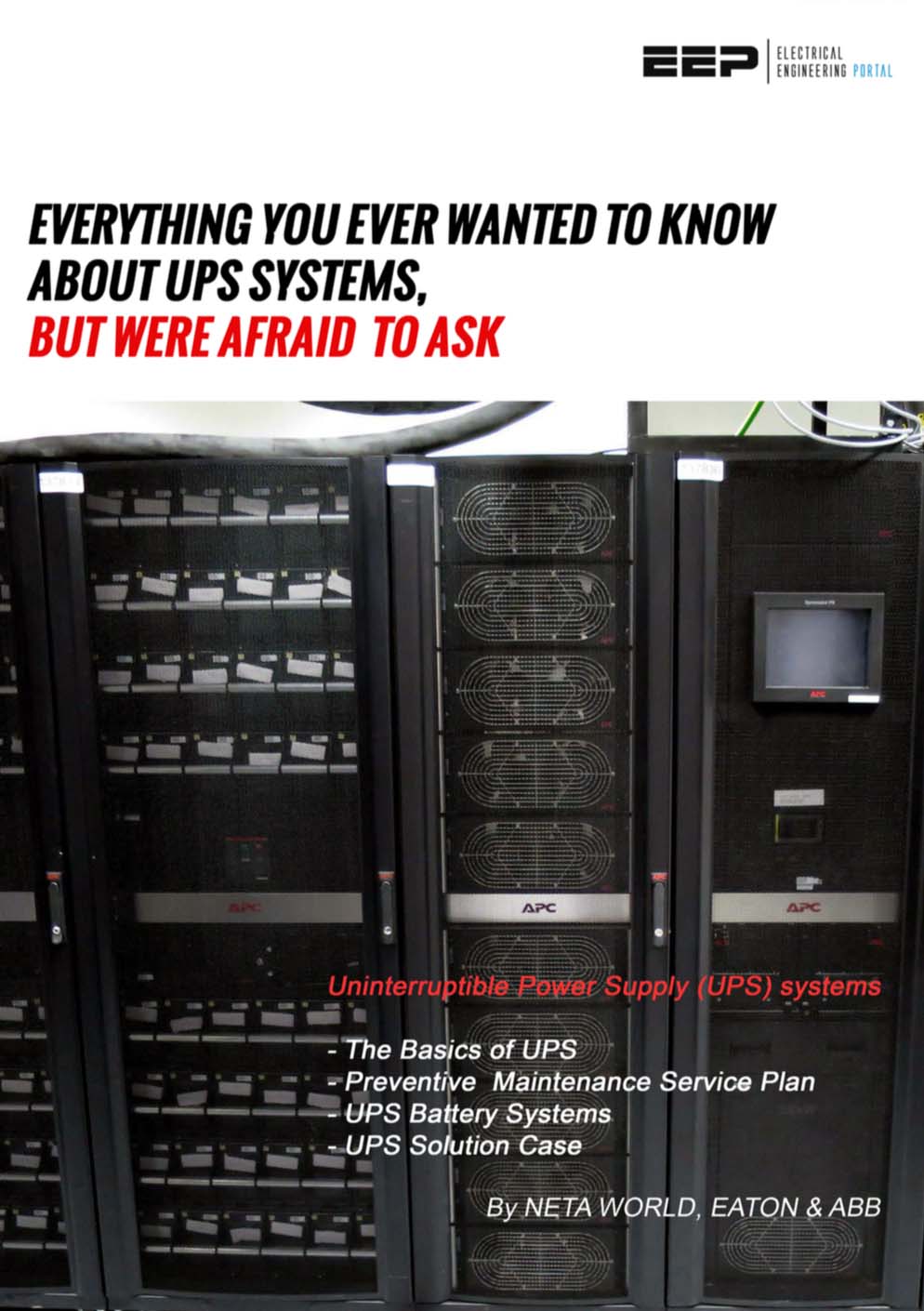Learn UPS systems
This guide is compilation of four guides and papers dedicated to uninterruptible power supply (UPS) systems, their classification, control techniques, battery systems as well as preventive maintenance. At the end, a real UPS solution is explained in details along with installation and commissioning procedures.

Online UPS System
Online UPS consist of a rectifier, an inverter, and a static switch as shown in the Figure 1. During normal mode of operation, the rectifier charges the batteries as well as maintains the constant DC link voltage.
While the inverter converts the DC link voltage to the required AC in order to feed the load. During power failure, the Magnetic Contactor (MC) disconnects the AC line, but the inverter keeps supplying power to the load from the battery bank without any interruption. Thus the inverter keeps on operation in both the modes.
The advantages of the online UPS include isolation of the load from the main line and almost negligible switching time. The major drawbacks of the online UPS are low efficiency, low power factor, and high total harmonic distortion (THD).
All the commercial units of 5KVA and above are commonly online UPS system.

Line Interactive UPS system
Line Interactive UPS consists of a static switch, bidirectional converter/inverter, and a battery bank as shown in Figure 2. The bidirectional converter/inverter connects the battery bank to the load.
Operation Modes
During normal mode of operation – the main AC line supplies the power to the load and the bidirectional converter/inverter charges the battery.
During the grid failure – the static switch disconnects the load from the main supply and the bidirectional converter/inverter supplies the power to the load.

The line interactive UPS has the advantages of low cost, small size, and high efficiency. The only limitation is that it does not provide any voltage regulation during normal mode of operation.
Generally the Line interactive UPS system is rated between 0.5 kVA and 5 kVA, and the efficiency of the system is normally greater than 97%, provided the main AC line is clean from any transients and spikes.
| Title: | Everything you ever wanted to know about UPS systems, but were afraid to ask – Eaton, ABB and Siemens |
| Format: | |
| Size: | 11.7 MB |
| Pages: | 111 |
| Download: | Here 🔗 (Get Premium Membership) | Video Courses | Download Updates |



very valuable experience, it has added to my knowledge in the filed of UPS system.